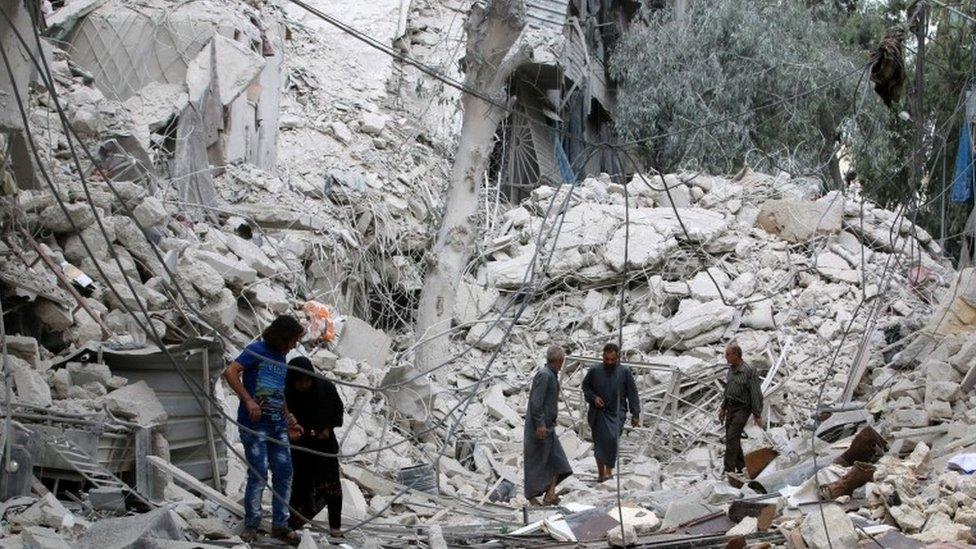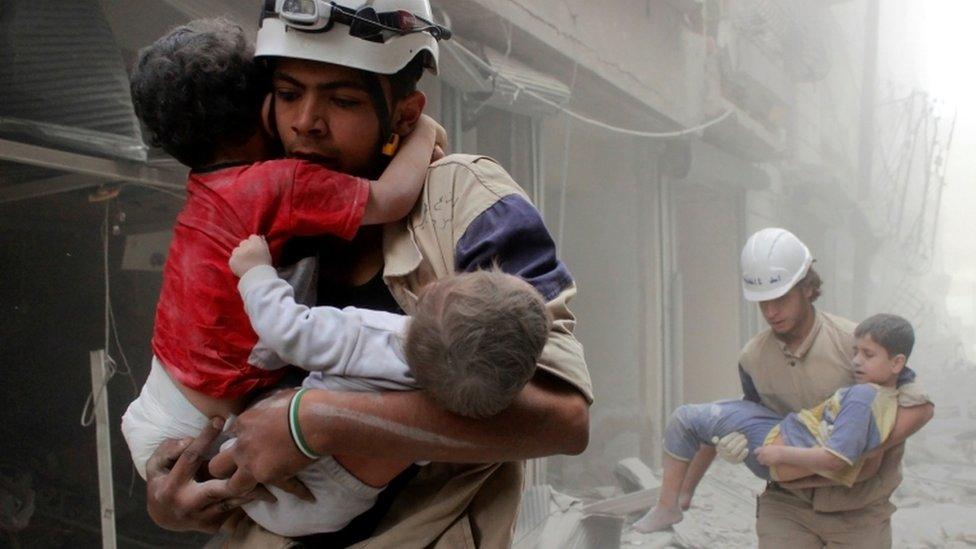Syria conflict: Aleppo remains thorn in government's side
- Published

With Syrian government forces insisting that the air and artillery bombardment of eastern Aleppo is the preliminary for "a comprehensive" ground assault, it would be easy to see the current upsurge in fighting as marking perhaps the start of the final battle for this key city.
Indeed, the intensity of the bombardment certainly suggests that a significant push is under way.
Aleppo matters. It is one of the few major urban areas to be held - in this case partially - by the rebels. Before the war the city was Syria's great commercial centre, and it thus represents a key strategic and psychological prize.
As long as parts of the city are held by the rebels, it is a thorn in the government's side.
But if captured by government forces it would be an important step in ensuring Russia's main strategic goal: the survival of a pro-Assad statelet with effective strategic depth, making the President Assad a factor that would have to be dealt with in any future peace arrangements.
Of course we have been here before. During the earlier part of this year Syrian government forces, along with various pro-Iranian militias, launched a major offensive that resulted in the siege of the rebel-controlled eastern part of the city.
This siege was consolidated in early July, but just a few weeks later the rebels launched an offensive of their own.

Islamic State and the crisis in Iraq and Syria in maps
This resulted in the cutting of a key communications link to the south-west of Aleppo, effectively bringing the government-held area under siege.
Bitter taste
Each side can thus hold the others' territory at risk. Russian and Syrian commanders - always sceptical about the merits of the latest ceasefire - now appear to have been given a green light to sort out the Aleppo problem once and for all.
Imagery of the shattered city presents a gaunt vista in which thousands of innocent people remain trapped on both sides. Targeted attacks by government forces against medical and civil defence facilities add another element of horror to the situation.

The fact that this new onslaught is taking place against a backdrop of the total failure in the US and Russian brokered efforts to implement a ceasefire in Syria is also significant.
In the wake of this failure there is a good degree of bitterness on all sides. This provides space for the stepping up of military action on the ground.
Indeed the pause may well have enabled government forces to consolidate their positions, reposition in key areas, and to improve their intelligence gathering.
The military picture though is complex. In the past, despite support from Russian air power, Syrian government forces and their allies have run out of steam.
Rebel groups have been able to draw in fighters from around the city, holding back localised offensives and ultimately going on to the attack themselves. There is no way of knowing if this pattern will be repeated this time.
Outside actors
Aleppo, now the epicentre of the Syrian crisis, will draw in forces from many outside players.
The Russian are already engaged - certainly from the air - and one can only speculate about other potential niche areas where they may be involved on the ground.
Hezbollah and other pro-Iranian fighters may also take a role. And Turkey may encourage rebel groups that it backs to reinforce the eastern part of the city.
Amateur footage shows burning buildings in Aleppo
And the failure of the ceasefire may well serve to drive rebel groups into the arms of more extreme Islamist elements linked to al-Qaeda.
So the scene is set for a battle that could mark a significant turning point for rebels and government forces alike.
The weakness though of the Assad regime's forces may mean that it simply doesn't have the muscle to impose a definitive outcome on Aleppo.
The result then would be a stalemate with an even greater level of destruction and loss of life.
US Secretary of State John Kerry warned that in the absence of a ceasefire deal things in Syria could get a lot worse. In Aleppo that seems already to be happening.